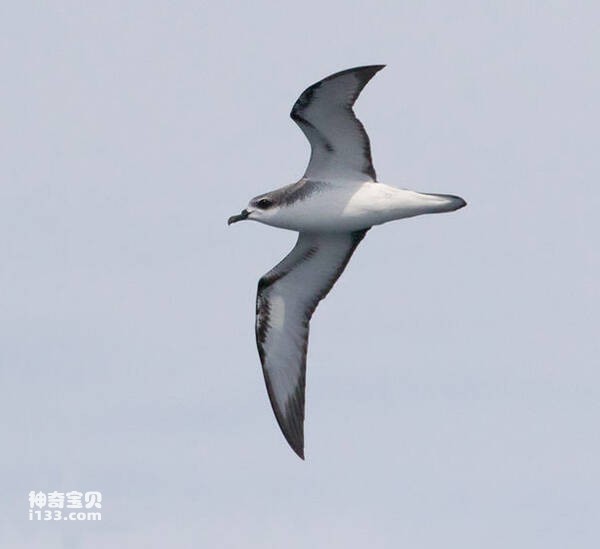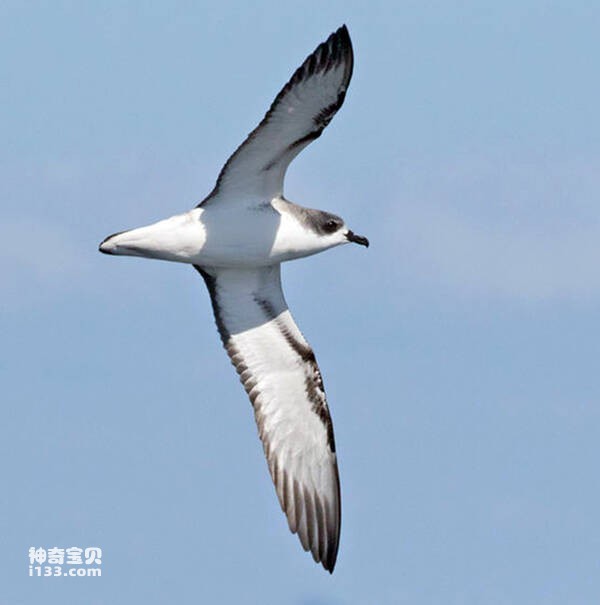Pterodroma cookii
IUCN
LCBasic Information
Scientific classification
- name:Pterodroma cookii
- Scientific Name:Pterodroma cookii,Cook's Petrel,Fardela blanca de Cook,Fardela blanca de Más a Tierra,Fardela de Cook,Petrel de Cook
- Outline:Waterfowl
- Family:
Vital signs
- length:25-30CM
- Weight:About 180g
- lifetime:No textual research information is available
Feature
It is an off-white seabird with a white forehead fused into a gray crest
Distribution and Habitat
Resident birds: Peru and United States.
Breeding grounds: New Zealand.
Non-breeding places: American Samoa, Chile, Cook Islands, French Polynesia, Niue, Mexico, Norfolk Island, Pitcairn, Wallis and Futuna.
Wandering (non-breeding grounds) : Canada.
Wandering: Australia and Kiribati.
Uncertain source (seasonal uncertain) : Ecuador, French Southern Territories, New Caledonia, Samoa, Tokelau, Tonga and Tuvalu.
The black-footed Shearwater is endemic to New Zealand and lives mainly between 34°S and 30°N, confined to the three islands of New Zealand. The largest breeding ground is Little Baril Island, while the Great Barrier Reef Island is almost devoid of the bird, both in the north. But the species also breeds on Cod Island, off the southern coast of Stewart Island. After breeding, it migrates to the eastern Pacific Ocean and appears on the west coast of the Americas.
It usually nests under tall trees in forests above 200 meters above sea level, but also in mature vege
Appearance
The black-footed shearwater is 25-30 cm long, has a wingspan of 65-66 cm, and weighs 180 grams. It is a medium-sized bird with similar sexes, but the male is usually slightly larger than the female. The upper mouth structure is special, composed of a tubular nose, the mouth end is hooked, and the nostrils are formed into two tubes on the upper side of the mouth. The head is gray, with white spots and dark colors on the crown and forehead, a short, white brow bone, and dark areas below the eyes. The black beak is 25-30 mm long. Eyes dark brown; The legs are dark blue-gray or dark pink; The webbed feet are yellow with black edges.
Gray feathers, narrow wings. The grey underbody contrasts with the distinct black-brown "M" on the upper wings and rump. The tail is gray, with a dark rectangular stripe in the center and the darkest tip, while the outer tail feathers are light gray and the outermost paired feathers are white. The abdomen is mostly white, with only a dark patchy li
Details
Black-footed petrel (Latin scientific name: Pterodroma cookii) foreign name Cook' s Petrel, Fardela blanca de Cook, Fardela blanca de Mas a Tierra, Fardela de Cook, Petrel de Cook, no subspecies.

The black-footed Shearwater migrates to the eastern Pacific between April and November after the breeding season. Migrate north to the Gulf of Alaska and south of the Aleutian Islands. The species can be seen from the Aleutian Islands and northern Hawaii, to California and the west coast of South America, and to southern Peru.
The black-footed Shearwater is nocturnal in its breeding grounds. When the birds leave the breeding island to feed after dark, their flight is fast and erratic, their wings flapping quickly and eagerly. They have many acrobatic and fancy flight positions, interspersed with towering thrusts. They are highly pelagic birds that only land during breeding periods. They fly great distances to find food at sea. They feed on the surface, but can dive to depths of 20 meters. They usually hunt primarily on the surface and use their beaks to catch prey from the surface. The species' tubular nostrils, located on either side of the beak, have a strong sense of smell, which is very helpful when foraging in the dark.

Like other petrels, the black-footed Shearwater is very loud. Will make a bleating sound "kek-kek-kek" or a nasal "nga-nga nga", sometimes during long flights. Muffled "boos" or loud purrs can also be heard. But they can be quiet at sea. They usually forage at night, but during the breeding season, they also forage during the day. Often in the sea low flying waves. It usually feeds on invertebrates such as squid, small fish, squid and crustaceans.
The breeding season for the northern black-footed Shearwater is between September and April of the following year, but southern birds breed a month later. After their first visit to the nesting cave, they head out to sea 25-27 days before laying eggs and hatching. The couple is monogamous and the long-term couple relationship lasts for several seasons.

The black-footed Shearwater nests in a long hole, sometimes among the roots of trees on a slope. The interior of the nest is well lined. The female lays a white egg. The incubation period is about 47 days, and the feeding period is 12-16 days. The upper body of the hatchling is covered with light gray fur, and the lower body is mostly white. Co-fed by two adult birds, the birds become independent in early March when they are about 3 months old.
In January 2012, it was estimated that there were more than 650,000 mature individuals on Little Baril Island and about 15,000 mature individuals on Cod Island. Thus, the total population estimate is rounded up to about 670,000 mature populations.
Listed on the IUCN Red List of Threatened Species (IUCN)2018 ver3.1 - Vulnerable (VU).
Protect wild animals and eliminate wild meat.
Maintaining ecological balance is everyone's responsibility!








